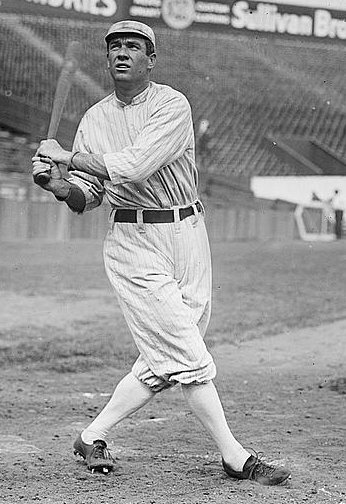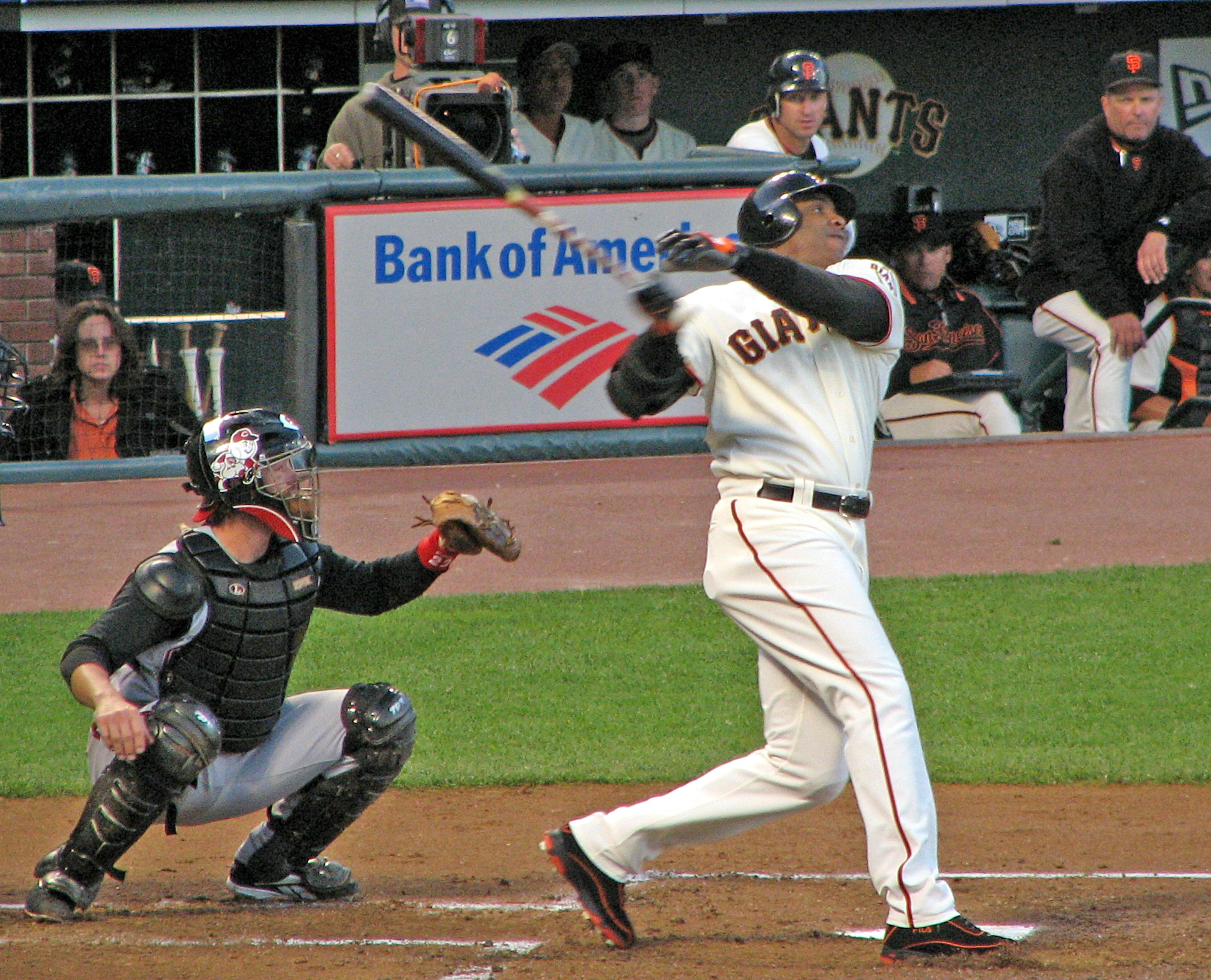|
Defense-Independent Component ERA
Defense-Independent Component ERA (DICE) is a 21st-century variation on Component ERA, one of an increasing number of baseball sabermetrics that fall under the umbrella of defense independent pitching statistics. DICE was created by Clay Dreslough in 2001. The formula for Defense-Independent Component ERA (DICE) is: : \text =3.00 + \frac In that equation, "HR" is home runs, "BB" is walks, "HBP" is hit batters, "K" is strikeouts, and "IP" is innings pitched. That equation gives a number that is better at predicting a pitcher's ERA in the following year than the pitcher's actual ERA in the current year. Component ERA was created by Bill James to create a more accurate way of evaluating pitchers than earned run average (ERA). Whereas ERA is significantly affected by luck (such as whether the component hits are allowed consecutively), Component ERA eliminates this factor and assigns a weight to each of the recorded 'components' of a pitchers performance. For CERA, these are sing ... [...More Info...] [...Related Items...] OR: [Wikipedia] [Google] [Baidu] |
Component ERA
Component ERA or ERC is a baseball statistic invented by Bill James. It attempts to forecast a pitcher's earned run average (ERA) from the number of hits and walks allowed rather than the standard formula of average number of earned runs per nine innings. ERC allows one to take a fresh look at a pitcher's performance and gauge if his results are more or less than the sum of its parts. The formula for ERC as it appears in the 2004 edition of the Bill James Handbook: ERC = 9 * - 0.56 where H is hits, BB is bases on balls (walks), HBP is hit by pitch, BFP is batters faced by pitcher, IP is innings pitched, and PTB is pitcher's total bases and is defined as: PTB = 0.89 * (1.255*(H-HR) + 4*HR) + 0.56 * (BB + HBP -IBB) where HR is home runs, IBB is intentional walks, and others are as above. The point of the first component is to represent the number of baserunners allowed. The PTB component combines an estimate of extra bases allowed (first half) with the fact that walks ... [...More Info...] [...Related Items...] OR: [Wikipedia] [Google] [Baidu] |
Baseball
Baseball is a bat-and-ball games, bat-and-ball sport played between two team sport, teams of nine players each, taking turns batting (baseball), batting and Fielding (baseball), fielding. The game occurs over the course of several Pitch (baseball), plays, with each play beginning when a player on the fielding team (baseball), fielding team, called the pitcher, throws a Baseball (ball), ball that a player on the batting team (baseball), batting team, called the Batter (baseball), batter, tries to hit with a baseball bat, bat. The objective of the offensive team (batting team) is to hit the ball into the field of play, away from the other team's players, allowing its players to run the Base (baseball), bases, having them advance counter-clockwise around four bases to score what are called "Run (baseball), runs". The objective of the defensive team (referred to as the fielding team) is to prevent batters from becoming Base running, runners, and to prevent runners base running ... [...More Info...] [...Related Items...] OR: [Wikipedia] [Google] [Baidu] |
Sabermetrics
Sabermetrics (originally SABRmetrics) is the original or blanket term for sports analytics in the US, the empirical analysis of baseball, especially the development of advanced metrics based on baseball statistics that measure in-game activity. The term is derived from the movement's progenitors, members of the Society for American Baseball Research (SABR), founded in 1971, and was coined by Bill James, (in 1980, according to SABR.org), who is one of its pioneers and considered its most prominent advocate and public face. The term moneyball refers to the use of metrics to identify "undervalued players" and sign them to what ideally will become "below market value" contracts; it began as an effort by small-market teams to compete with the much greater resources of big-market ones. Early history English-American sportswriter Henry Chadwick developed the box score in New York City in 1858. This was the first way statisticians were able to describe the sport of baseball by ... [...More Info...] [...Related Items...] OR: [Wikipedia] [Google] [Baidu] |
Defense Independent Pitching Statistics
In baseball, fielding independent pitching (FIP) (also referred to as defense independent pitching (DIP)) is intended to measure a pitcher's effectiveness based only on statistics that do not involve fielders (except the catcher). These include home runs allowed, strikeouts, hit batters, walks, and, more recently, fly ball percentage, ground ball percentage, and (to a much lesser extent) line drive percentage. By focusing on these statistics and ignoring what happens once a ball is put in play, which – on most plays – the pitcher has little control over, DIP claims to offer a clearer picture of the pitcher's true ability. The most controversial part of DIP is the idea that pitchers have little influence over what happens to balls that are put into play. Some people believe this has been well-established (see below), primarily by showing the large variability of most pitchers' BABIP from year to year. However, there is a wide variation in career BABIP among pitchers, and this ... [...More Info...] [...Related Items...] OR: [Wikipedia] [Google] [Baidu] |
Clay Dreslough
Clay Dreslough is an American video game designer. He is the creator of the '' Baseball Mogul'' and '' Football Mogul'' computer sports games, and is the co-founder and president of Sports Mogul, Inc. He was born in Boston, Massachusetts and graduated from Wesleyan University. Professional life Dreslough's design and programming credits include the '' Tony La Russa Baseball'' series, ''Pennant Fever'', '' Microsoft Baseball'', '' Madden'', '' Baseball Mogul'', ''Baseball Mogul Online'', '' Football Mogul'', and '' MLB Slugfest Loaded''. His production credits include ''NBA: Phenom'' and ''MLB: Road To The Show''. According to MobyGames, Clay has more published baseball and football titles than any other member of the game industry. As a successful computer game developer and publisher, Dreslough is rare in his outspoken stance against digital rights management and other forms of copy protection. According to MobyGames, Dreslough has been credited as a programmer, designer or vi ... [...More Info...] [...Related Items...] OR: [Wikipedia] [Google] [Baidu] |
Bill James
George William James (born October 5, 1949) is an American baseball writer, historian, and statistician whose work has been widely influential. Since 1977, James has written more than two dozen books about baseball history and statistics. His approach, which he named sabermetrics after the Society for American Baseball Research (SABR), scientifically analyzes and studies baseball, often through the use of statistical data, in an attempt to determine why teams win and lose. In 2006, ''Time (magazine), Time'' named him in the Time 100, ''Time'' 100 as one of the most influential people in the world. In 2003, James was hired as senior advisor on Baseball Operations for the Boston Red Sox and worked for the team for 17 years during which they won four World Series championships. Early life James was born in Holton, Kansas. He joined the United States Army in 1971. After his service, he graduated from the University of Kansas in 1973 with degrees in English and economics, and in 197 ... [...More Info...] [...Related Items...] OR: [Wikipedia] [Google] [Baidu] |
Earned Run Average
In baseball statistics, earned run average (ERA) is the average of earned runs allowed by a pitcher per nine innings pitched (i.e. the traditional length of a game). It is determined by dividing the number of earned runs allowed by the number of innings pitched and multiplying by nine. Thus, a lower ERA is better. Runs resulting from passed balls, defensive errors (including pitchers' defensive errors), and runners placed on base at the start of extra innings are recorded as unearned runs and omitted from ERA calculations. Origins Henry Chadwick is credited with devising the statistic, which caught on as a measure of pitching effectiveness after relief pitching came into vogue in the 1900s. Prior to 1900 and for many years afterward, pitchers were routinely expected to pitch a complete game, and their win–loss record was considered sufficient in determining their effectiveness. After pitchers like James Otis Crandall and Charley Hall made names for themselves as rel ... [...More Info...] [...Related Items...] OR: [Wikipedia] [Google] [Baidu] |
Single (baseball)
In baseball, a single is the most common type of base hit, accomplished through the act of a batter safely reaching first base by hitting a fair ball (thus becoming a runner) and getting to first base before a fielder puts him out. As an exception, a batter-runner reaching first base safely is not credited with a single when an infielder attempts to put out another runner on the first play; this is one type of a fielder's choice. Also, a batter-runner reaching first base on a play due to a fielder's error trying to put him out at first base or another runner out (as a fielder's choice) is not credited with a single. On a single hit to the outfield, any runners on second base or third base normally score, and sometimes the runner from first base is able to advance to third base. Depending on the location of the hit, a quick recovery by the outfielder can prevent such an advance or create a play on the advancing runner. Hitters who focus on hitting singles rather than ... [...More Info...] [...Related Items...] OR: [Wikipedia] [Google] [Baidu] |
Double (baseball)
In baseball, a double is the act of a batter striking the pitched ball and safely reaching second base without being called out by the umpire, without the benefit of a fielder's misplay (see error) or another runner being put out on a fielder's choice. A double is a type of hit (the others being the single, triple and home run) and is sometimes called a "two-bagger" or "two-base hit". For statistical and scorekeeping purposes it is denoted by 2B. Description Typically, a double is a well-hit ball into the outfield that finds the "gap" between the center fielder and one of the corner outfielders, bounces off the outfield wall and down into the field of play, or is hit up one of the two foul lines. To hit many doubles, a batter must have decent hitting skill and power; it also helps to run well enough to beat an outfield throw. Many of the best double hitting batters were revered for high baseball IQ and the ability to slide well and turn a single into an extra-base h ... [...More Info...] [...Related Items...] OR: [Wikipedia] [Google] [Baidu] |
Triple (baseball)
In baseball, a triple is the act of a Batter (baseball), batter safely reaching third base after hitting the ball, with neither the benefit of a fielder's misplay (see error (baseball statistics), error) nor another baserunner, runner being put out on a fielder's choice. A triple is sometimes called a "three-bagger" or "three-base hit". For baseball statistics, statistical and baseball scorekeeping, scorekeeping purposes it is denoted by 3B. Triples have become somewhat rare in Major League Baseball, less common than both the Double (baseball), double and the home run. This is because it requires a ball to be hit solidly to a distant part of the field (ordinarily a line drive or Fly ball (baseball), fly ball near the Foul line (baseball), foul line closest to Right fielder, right field), or the ball to take an irregular bounce in the outfield, usually against the wall, away from a outfielder, fielder. It also requires the batter's team to have a good strategic reason for wanting ... [...More Info...] [...Related Items...] OR: [Wikipedia] [Google] [Baidu] |
Home Run
In baseball, a home run (abbreviated HR) is scored when the Baseball (ball), ball is hit in such a way that the batting (baseball), batter is able to circle the bases and reach home plate safe (baseball), safely in one play without any error (baseball), errors being committed by the Defense (sports), defensive team. A home run is usually achieved by hitting the ball over the outfield fence between the foul poles (or hitting either foul pole) without the ball touching the Baseball field, field. Inside-the-park home runs where the batter reaches home safely while the baseball is in play on the field are infrequent. In very rare cases, a fielder attempting to catch a ball in flight may misplay it and knock it over the outfield fence, resulting in a home run. An official scorer will credit the batter with a hit (baseball), hit, a Run (baseball), run scored, and a run batted in (RBI), as well as an RBI for each Base running, runner on base. The pitcher is recorded as having given u ... [...More Info...] [...Related Items...] OR: [Wikipedia] [Google] [Baidu] |
Base On Balls
A base on balls (BB), better known as a walk, occurs in baseball when a batter receives four pitches during a plate appearance that the umpire calls '' balls'', and is in turn awarded first base without the possibility of being called out. The base on balls is defined in Section 2.00 of baseball's Official Rules, and further detail is given in 6.08(a). Despite being known as a "walk", it is considered a faux pas for a professional player to actually walk to first base; the batter-runner and any advancing runners normally jog on such a play. The term "base on balls" distinguishes a walk from the other manners in which a batter can be awarded first base without liability to be put out (e.g., hit by pitch (HBP), catcher's interference). Though a base on balls, catcher's interference, or a batter hit by a pitched ball all result in the batter (and possibly runners on base) being awarded a base, the term "walk" usually refers only to a base on balls, and not the other methods of r ... [...More Info...] [...Related Items...] OR: [Wikipedia] [Google] [Baidu] |





